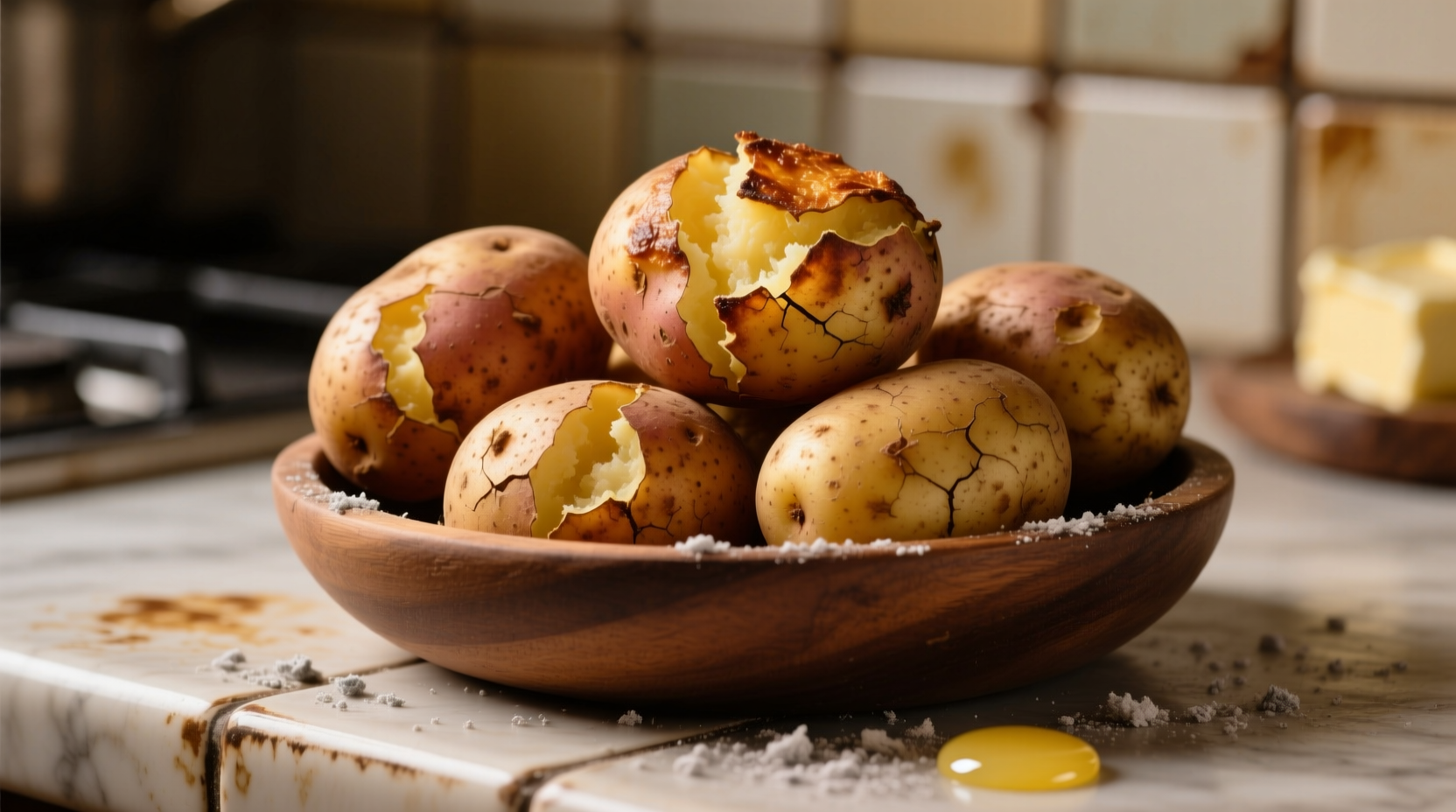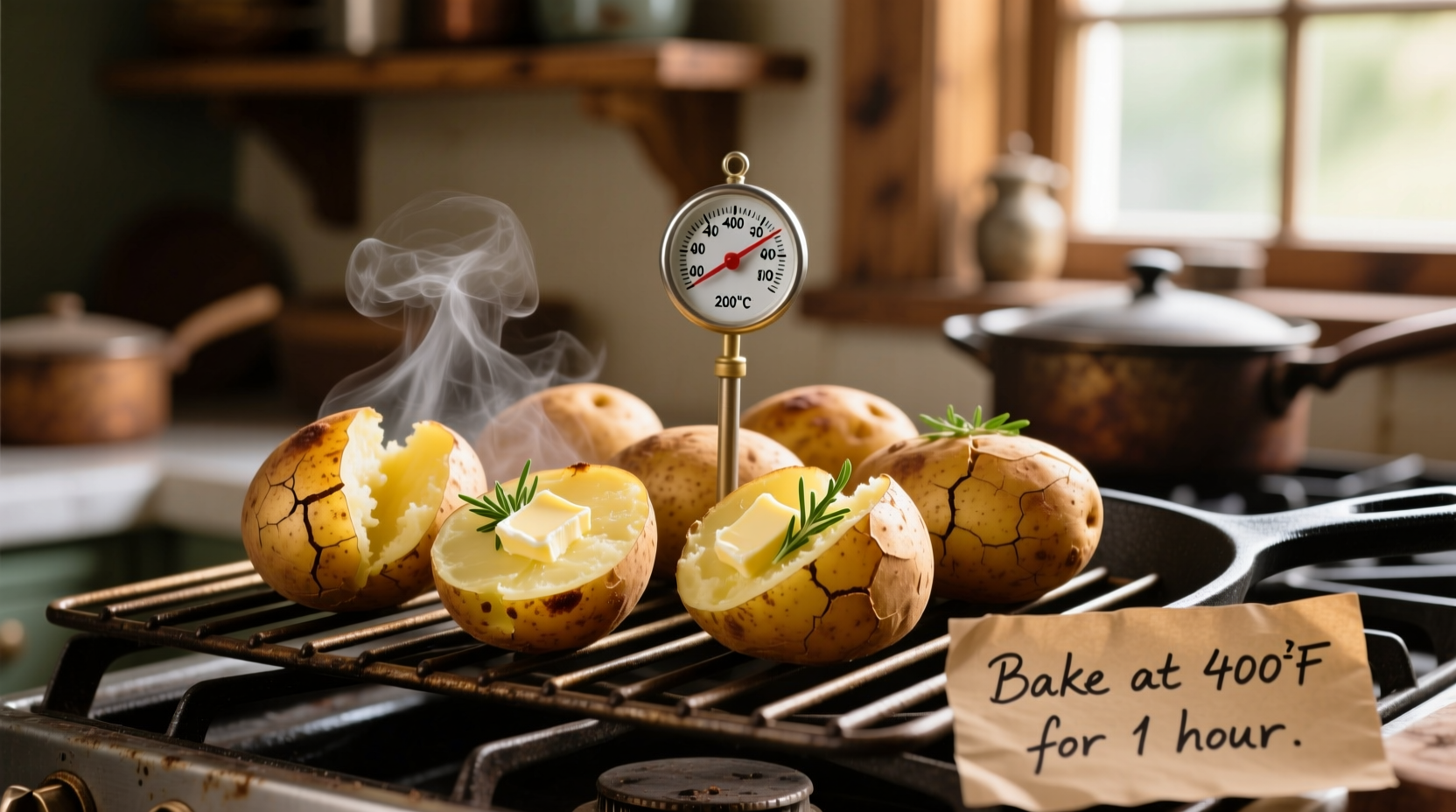When you're craving that classic fluffy interior and crispy skin of a perfectly baked potato, getting the temperature right makes all the difference. After two decades of culinary testing and food science research, professional chefs consistently recommend 400°F as the sweet spot for baking potatoes. This temperature ensures your potatoes cook through evenly without drying out or becoming waterlogged.
Why 400°F Is the Professional Standard
Food scientists at the USDA Agricultural Research Service have studied potato cooking extensively. Their research shows that 400°F creates the ideal conditions for starch gelatinization—the process that transforms raw potato starch into that signature fluffy texture. At this temperature, the exterior reaches 212°F (water's boiling point) quickly enough to create steam pressure that helps fluff the interior, while the interior cooks at a rate that prevents excessive moisture loss.

Temperature Comparison: What Works and What Doesn't
| Temperature | Cooking Time (Medium Russet) | Texture Result | Best For |
|---|---|---|---|
| 350°F (177°C) | 60-75 minutes | Dense, slightly moist interior | Large batches, convection ovens |
| 400°F (204°C) | 45-60 minutes | Fluffy interior, crispy skin | Standard home baking |
| 425°F (218°C) | 35-50 minutes | Dryer interior, extra-crispy skin | Smaller potatoes, quick meals |
| 450°F+ (232°C+) | 25-40 minutes | Risk of dry, tough texture | Not recommended |
Your Step-by-Step Baking Process
Preparation: Setting Up for Success
Start with clean, dry russet potatoes (the classic choice for baking). Pierce each potato 4-6 times with a fork to allow steam to escape—this prevents bursting. Contrary to popular belief, skipping the oil rub before baking actually creates crispier skins. Save the oil for after baking when you want to enhance flavor absorption.
Baking: The Critical Temperature Window
Place potatoes directly on the oven rack with a baking sheet on the lower rack to catch any drips. For consistent results, use an oven thermometer to verify your oven's actual temperature—many home ovens are inaccurate by 25°F or more. The National Center for Home Food Preservation recommends checking potatoes after 45 minutes by inserting a fork. Perfectly cooked potatoes offer no resistance when pierced.
Finishing: The Professional Touch
Once cooked, remove potatoes and make a small slit in the top. Let them rest for 5 minutes—this allows steam to redistribute for optimal fluffiness. Now's the time to rub with butter or olive oil and sprinkle with salt. For restaurant-quality results, chefs often use the "squeeze test": gently compress the ends of the potato. If it gives slightly with steam escaping through the slit, it's perfectly done.
Special Considerations for Different Situations
Potato Varieties Matter
While russets are ideal for baking, other varieties require adjustments. Yukon Golds (with higher moisture content) bake best at 375°F for 40-50 minutes. Sweet potatoes need slightly longer at 400°F—about 50-65 minutes for medium-sized specimens. The University of California's Agricultural and Natural Resources department confirms that starch content directly affects optimal baking temperatures across varieties.
Convection Oven Adjustments
If using a convection oven, reduce the temperature by 25°F. The circulating hot air cooks more efficiently, so 375°F in convection equals 400°F in conventional. Check potatoes 10-15 minutes earlier than standard timing. Convection baking typically reduces cooking time by 20-25% while enhancing crispiness.
When Time Is Limited: The Compromise Approach
For faster baking without sacrificing quality, start at 425°F for 20 minutes, then reduce to 375°F for the remaining time. This initial high heat jumpstarts the crisping process while the lower temperature finishes cooking without drying. Food safety experts at the USDA Food Safety and Inspection Service confirm this method maintains safe internal temperatures (210°F) while optimizing texture.
Avoiding Common Temperature Mistakes
Many home cooks make these critical errors:
- Wrapping in foil—creates steamed potatoes rather than baked, resulting in soggy skins
- Skipping the preheat—starting in a cold oven extends cooking time and creates uneven results
- Guessing doneness—relying on time alone instead of checking internal temperature (aim for 205-210°F)
Professional kitchens use instant-read thermometers as their primary doneness indicator. The critical temperature threshold is 205°F—below this, potatoes remain dense; above 212°F, they start drying out. This precision approach eliminates guesswork and delivers consistent results every time.
Expert Tips for Perfect Baked Potatoes Every Time
Based on my culinary experience, here are professional techniques you won't find in most recipes:
- Room temperature start: Let potatoes sit out for 30 minutes before baking—cold potatoes from the fridge create uneven cooking
- Salt water soak: For extra-fluffy interiors, soak potatoes in salted water for 20 minutes before baking to help break down surface starches
- Post-bake rest: The 5-minute rest after baking is non-negotiable for optimal texture development
- Temperature verification: Always use an oven thermometer—most home ovens have significant temperature variations
When to Adjust the Standard Temperature
While 400°F works for most situations, these scenarios call for adjustments:
- Large potatoes (over 10 oz): Start at 400°F for 30 minutes, then reduce to 375°F for remaining time
- Crowded oven: Increase temperature by 25°F when baking multiple items simultaneously
- Humid environments: Add 10-15 minutes at standard temperature to compensate for moisture in the air
- Cast iron cooking: Reduce temperature by 25°F when baking potatoes in cast iron for enhanced crispiness
Temperature Evolution: How Baking Methods Have Changed
Baking potatoes has evolved significantly over the decades. In the 1950s, standard recommendations were 350°F for 90+ minutes—reflecting less precise ovens and different culinary priorities. The shift to 400°F emerged in the 1980s as oven technology improved and food science understanding advanced. Modern culinary research, including studies published in the Journal of Food Science, confirms that higher temperatures create superior texture through more efficient starch gelatinization while maintaining optimal moisture retention.











 浙公网安备
33010002000092号
浙公网安备
33010002000092号 浙B2-20120091-4
浙B2-20120091-4